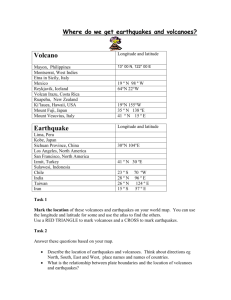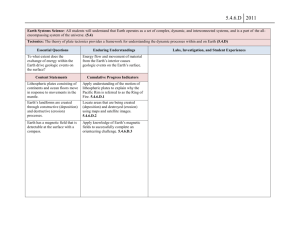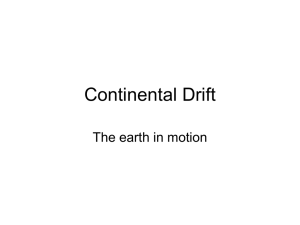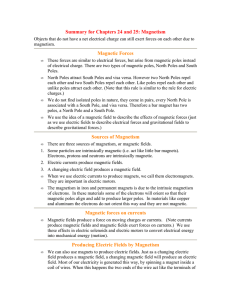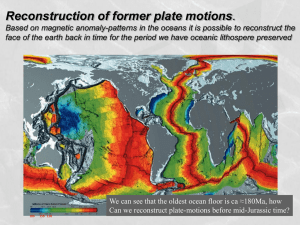9.2 – Sea Floor Spreading
advertisement
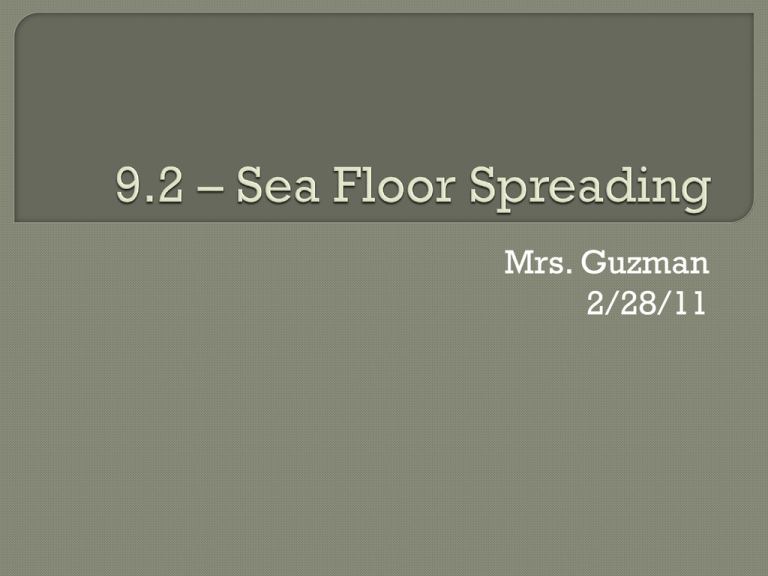
Mrs. Guzman 2/28/11 Sonar used to map out the majority of features • Deep Trenches • Mid-Ocean Ridges • Rift Valley • Mountains • Volcanoes Made of Igneous Rocks covered with sediment (not quite considered “rock” yet) More sediment the further away from ridges This means that _____________________ New floor at mid-ocean ridges due to eruptions. Moves outwards Old floor sinks again at subduction zones at edges of continents in trenches Magnetic Pole Reversal The Earth's magnetic poles moveup to 50 miles (80 km) per day. (average of 25 miles per year) •In the last 150 years, the pole has wandered a total of about 685 miles •The last time the poles switched was 780,000 years ago, and it's happened about 400 times in 330 million years Source: www.howstuffworks.com Earth’s magnetic field sometimes switches polarity Igneous rocks usually contains magnetite, which is magnetic. As it cools, its particles align to the N/S poles and remains until melted again. Shallow earthquakes around a trench Intermediate earthquakes as oceanic lithosphere is pulled under continental. Melting also occurs and we see volcanoes directly above on surface Deep earthquakes furthest from trench and further in from volcanoes Age = Youngest rock is closest to the ridge and oldest is closest to trench Also on Dynamic Planet USGS Map







